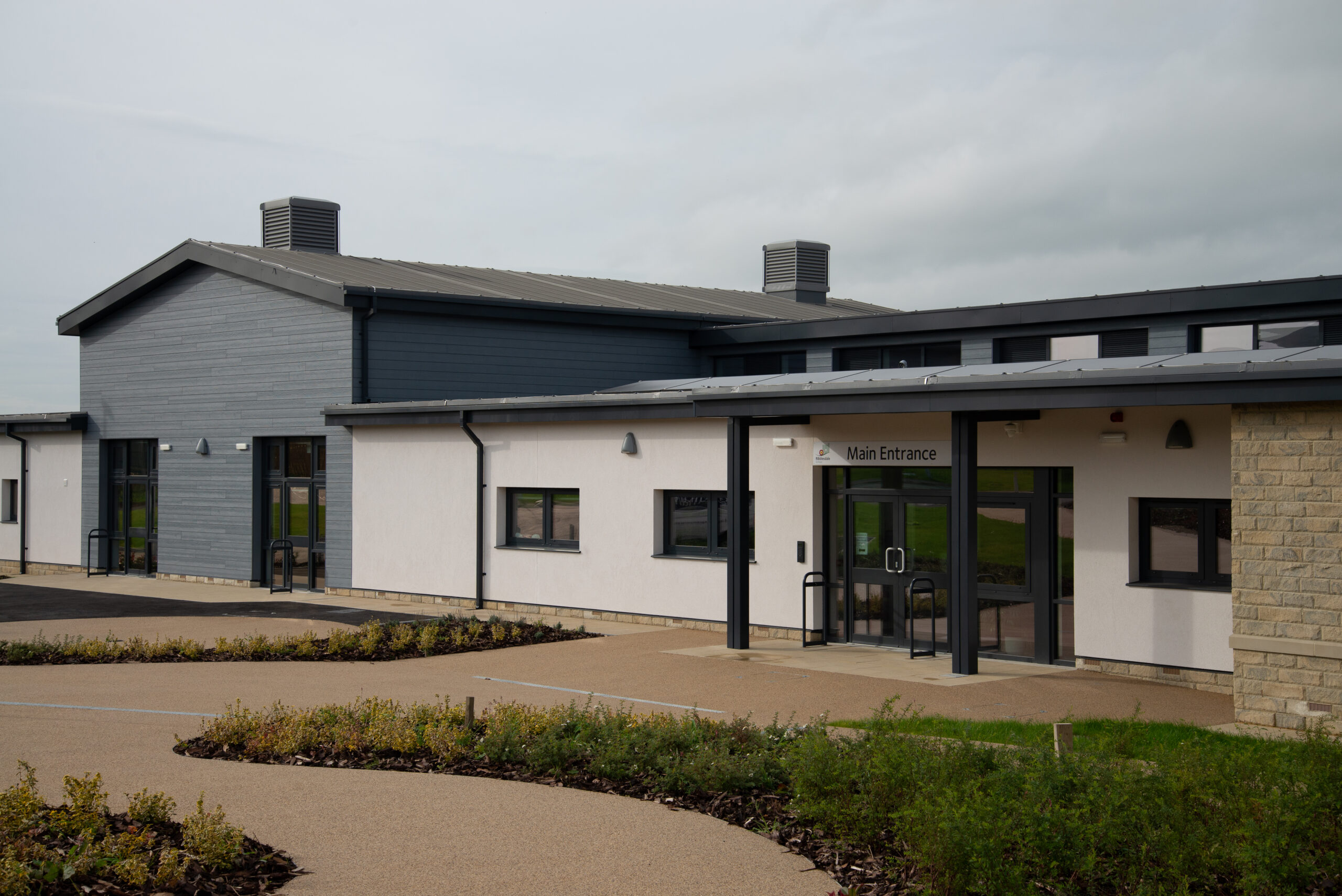State-of-the-art Ribblesdale Primary School opens to pupils

Equans is delighted to have completed work on the modular, target net zero-carbon Ribblesdale Primary Education Provision Site in the heart of the stunning Ribble Valley. The school, which will provide much-needed educational accommodation for a growing school and local community, was built using modular construction methods.
The benefits of modular construction are vast; mainly allowing for a higher build quality which is also more energy efficient. Modular construction also means a faster build time as opposed to traditional construction methods with less on-site trades.
Equans has installed a ground source heat pump, supplying the school with a sustainable source of heat and hot water. Solar PV has been installed on the roof, generating power for the school. This, along with the modular build processed, means the school is designed to be net-zero in operation.
Ribblesdale Primary, which is Lancashire’s first all-through school for children aged 4 to 16, is fully equipped for the new cohort of children and beyond including features such as a double-sized outdoor play area, underfloor heating and a bespoke library area. There is also a Multi-Use Games Area, football pitch, running track and woodland area located on-site for students to benefit from.
The school building was lowered in order to gain material for a brand-new football pitch, multi-use games area and general play area. This meant no material went to waste, and none was imported, saving resource and energy. There are also two water attenuation tanks on site, reducing flood risk.
On Monday the 6th of November, stakeholders from Equans, Lancashire County Council and the school gathered with pupils and parents to mark the official opening of the premises, with Manchester-born poet Tony Walsh in attendance to cut the ribbon and give an opening address.
Alyson Seddon, Construction Director at Equans, said: “We’re delighted to have completed work on this state-of-the-art primary school, on behalf of Lancashire County Council. It’s great that at Equans, we’ve been able to utilise our expertise in low-carbon construction to provide a sustainable school for generations to come.”
County Councillor Jayne Rear, Lancashire County Council’s cabinet member for Education and Skills, said: “Ribblesdale School primary provision will deliver future school places to a growing community in the Ribble Valley.
“The building was built within budget and on time for the September 2023 pupil intake and delivered in line with our net zero aspirations.
“It has also been designed in such a way that if and when required, the school can be easily expanded to meet future demands in the area.
“Year 6 pupils will also secure be guaranteed a place in Year 7 at Ribblesdale, should they want to remain, benefitting from a much smoother transition to secondary school when the time comes.”
Anne-Marie Horrocks, Headteacher at Ribblesdale Primary School, said: “Pupils attending Ribblesdale’s primary provision will access a truly cohesive through-school curriculum delivered by highly skilled specialist teachers and they’ll have the run of this fabulous building and all its facilities. Ribblesdale is an inclusive school with an exclusive offering. We’re so excited about all the opportunities ahead for our little ones!”






